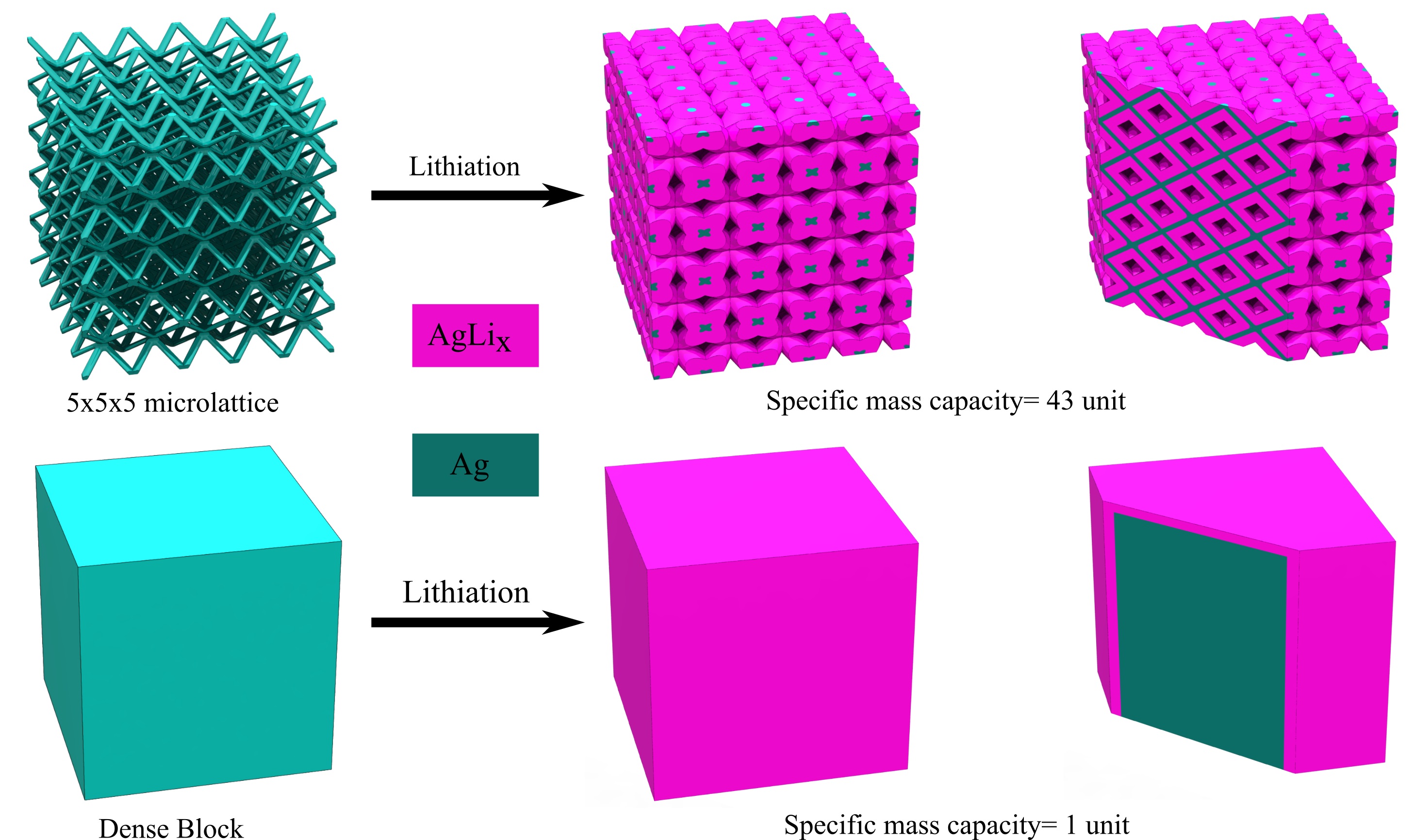
Additive manufacturing, otherwise known as 3D printing, can be used to manufacture porous electrodes for lithium-ion batteries. Up to now, because of the nature of the manufacturing process, the design of these 3D printed electrodes has been limited to just a few possible architectures. The internal geometry that produced the best porous electrodes with additive manufacturing was what's known as an interdigitated geometry – metal prongs interlocked like the fingers of two clasped hands with the lithium shuttling between them.
Lithium-ion battery capacity could be vastly improved, however, if their electrodes possessed microscale pores and channels. Even though an interdigitated geometry does allow lithium to move through the battery efficiently during charging and discharging, it is not optimal.
Researchers from Carnegie Mellon University and the Missouri University of Science and Technology have now developed a revolutionary new 3D printing method that can create a 3D microlattice structure with controlled porosity. In a paper in Additive Manufacturing, the researchers show that this printed microlattice structure vastly improves the capacity and charge-discharge rates for lithium-ion batteries.
"In the case of lithium-ion batteries, the electrodes with porous architectures can lead to higher charge capacities," says Rahul Panat, an associate professor of mechanical engineering at Carnegie Mellon University. "This is because such architectures allow the lithium to penetrate through the electrode volume leading to very high electrode utilization, and thereby higher energy storage capacity. In normal batteries, 30–50% of the total electrode volume is unutilized. Our method overcomes this issue by using 3D printing where we create a microlattice electrode architecture that allows the efficient transport of lithium through the entire electrode, which also increases the battery charging rates."
The additive manufacturing method reported in Panat's paper represents a major advance in printing complex geometries for 3D battery architectures, as well as an important step toward geometrically optimizing 3D configurations for electrochemical energy storage. The researchers estimate that this technology will be ready to translate to industrial applications in about two to three years.
The silver microlattice structure used as the electrodes for lithium-ion batteries was shown to improve battery performance in several ways, such as providing a fourfold increase in specific capacity and a twofold increase in areal capacity when compared to a solid silver electrode. Furthermore, the electrodes retained their complex 3D lattice structures after 40 electrochemical cycles, demonstrating their mechanical robustness. The batteries can thus have high capacity for the same weight or alternately a vastly reduced weight for the same capacity, an important attribute for transportation applications.
The Carnegie Mellon researchers developed their own 3D printing method to create the porous microlattice architectures while leveraging the existing capabilities of an Aerosol Jet 3D printing system. The Aerosol Jet system, which was deployed at Carnegie Mellon University's College of Engineering earlier this year, also allowed the researchers to print planar sensors and other electronics at the microscale.
Until now, 3D printed battery efforts were limited to extrusion-based printing, where a wire of material is extruded from a nozzle, creating continuous structures. Interdigitated structures were possible using this method. With the method developed in Panat's lab, the researchers are able to 3D print the battery electrodes by rapidly assembling individual droplets one-by-one into 3D structures possessing complex geometries impossible to fabricate with typical extrusion methods.
"Because these droplets are separated from each other, we can create these new complex geometries," explains Panat. "If this was a single stream of material, as is in the case of extrusion printing, we wouldn't be able to make them. This is a new thing. I don't believe anybody until now has used 3D printing to create these kinds of complex structures."
This research will integrate well with biomedical electronic devices, where miniaturized batteries are required. Non-biological electronic micro-devices will also benefit from this work. And on a larger scale, electronic devices, small drones and aircraft could utilize this technology as well, due to the low weight and high capacity of the batteries printed using this method.
This story is adapted from material from Carnegie Mellon University, with editorial changes made by Materials Today. The views expressed in this article do not necessarily represent those of Elsevier. Link to original source.



